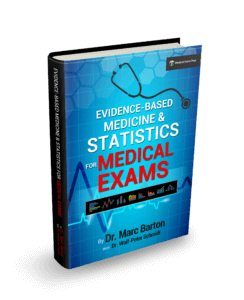Bringing new drugs onto the market
The process of bringing new drugs (or other health interventions) onto the market is long and arduous and, in some cases, can take years or even decades. Developing any new drug begins by developing an understanding of the disease or condition that it is intended to treat.
Basic scientific research provides ideas about potential strategies to target the specific aetiology of the condition. Biological targets are identified, and drugs are formulated to act on these targets.
The research process starts in the ‘pre-clinical phase’ with studies at a cellular level and eventually progresses to animal models to determine whether the target is influenced by the drug.
Once the researchers have completed the vigorous pre-clinical screening process, they can apply for a clinical trial authorisation to allow for the investigational drug to be tested on human volunteers in clinical trials.
Clinical drug trials
A clinical drug trial is a study that is carefully designed to assess the benefits and risks of a specific investigational drug. They usually comprise the following stages or phases:
Phase 1:
Phase 1 trials are usually small trials that recruit only a small number of healthy volunteers (usually in the region of 20-100 participants). These trials typically last several months. The main purpose of phase 1 is to gather information on the dosing, timing and safety of a new drug. There is approximately a 70% success rate and progression to phase 2.
Phase 2:
Phase 2 trials are generally slightly larger than phase 1 (usually in the region of 100-300 participants), and they last longer (up to 2 years). In this phase, the drug is tested on patients, and the primary goal is to test the safety and effectiveness of the new drug. There is approximately a 33% success rate and progression to Phase 3. It should be noted that some trials cover Phase 2 and 3 together.
Phase 3:
Phase 3 trials usually have several thousand participants depending on the expected size of the effect and the incidence of the study outcome (usually a disease or condition). They evaluate the effectiveness of the new drug compared with existing drugs or placebo and are generally randomised controlled trials. They usually last between 1 and 4 years and have approximately a 25% success rate.
Phase 4:
Phase 4 usually takes the form of post-marketing surveillance (see below) and is designed to further track long-term side effects and benefits. They usually have a high success rate (70-90%).
Post-marketing surveillance
Post-marketing surveillance (PMS) is the practice of monitoring the safety of a drug within the patient population after it has been released. Although the drug will have been subjected to numerous clinical trials prior to release, PMS forms an important part of the ongoing assessment of these drugs because even large phase 3 trials are too small to detect serious side effects unless these are common. The regulatory body responsible for PMS varies from country to country.
In the UK, the Medicines and Healthcare products Regulatory Agency (MHRA) and the Commission on Human Medicines (CHM) jointly operate the Yellow Card Scheme, which is aimed at identifying and mitigating Adverse Drug Reactions (ADRs).
In the United States, PMS is performed by the Food and Drug Administration (FDA), which operates a system called MedWatch, to which both doctors and patients can voluntarily report ADRs.
In Canada, PMS is performed by Health Canada, which has a division responsible for it called Marketed Health Products Directorate (MHPD).
Header image used on licence from Shutterstock
Medical Exam Prep would like to thank Dr. Marc Barton for permission to reproduce this extract from his book ‘Evidence-Based Medicine & Statistics for Medical Exams’.
About Dr. Marc Barton
Dr. Marc Barton qualified from Imperial College School of Medicine in 2001. Since that time he has worked in a variety of different medical specialities. He worked as a GP partner from 2006 until 2008 and more recently as a higher specialist trainee in Emergency Medicine.
‘Evidence-Based Medicine & Statistics for Medical Exams’ is available for purchase here.






